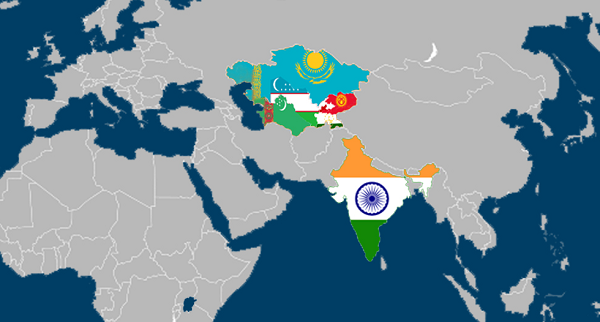- Courses
- GS Full Course 1 Year
- GS Full Course 2 Year
- GS Full Course 3 Year
- GS Full Course Till Selection
- MEP (Mains Enrichment Programme) Data, Facts
- Essay Target – 150+ Marks
- Online Program
- GS Recorded Course
- NCERT- First Ladder
- Polity
- Geography
- Economy
- Ancient, Medieval and Art & Culture AMAC
- Modern India, Post Independence & World History
- Environment
- Governance
- Science & Technology
- International Relations and Internal Security
- Disaster Management
- Ethics
- Current Affairs
- Indian Society and Social Issue
- CSAT
- 5 LAYERED ARJUNA Mentorship
- Public Administration Optional
- ABOUT US
- OUR TOPPERS
- TEST SERIES
- FREE STUDY MATERIAL
- VIDEOS
- CONTACT US
Food security and Nutrition Report 2023
Food security and Nutrition Report 2023
Context:
Recently, The Food and Agriculture Organization of the United Nations (FAO) released a report titled “Regional Overview of Food Security and Nutrition 2023: Statistics and Trends” that paints a worrying picture of food access and nutritional well-being in India and the wider Asia Pacific region.
Key points
1.Food availability: Rising income inequality and inflation further exacerbate the affordability problem, creating a vicious cycle of poverty and malnutrition.
2.Malnutrition: 6% of India's population suffers from malnutrition, which translates into an economic and social burden.
3.Food insecurity: Although the prevalence of food insecurity in the region is lower than the global average, there are differences. South Asia faces higher numbers compared to East Asia, highlighting the need for regionalized approaches to food security.
4.Child's health: 7% of Indian children under the age of five are stunted, reflecting poor maternal health and nutrition, poor dietary habits and recurrent infections. High rates of wasting (18.7%) and overweight (2.8%) further underscore the need for comprehensive child health programs and better nutrition education.
5.Maternal health: A staggering 53% of women in India aged 15-49 are anaemic, raising concerns about maternal and newborn health.
6.Positive development: India's progress in exclusive breastfeeding (63.7%) exceeds the global average and represents a commendable effort in promoting early childhood nutrition.
Issues related to food security |
Probable solutions |
|
Population Growth: India's rapidly growing population places immense pressure on the food production and distribution systems. Ensuring an adequate food supply for the entire population becomes challenging. Agricultural Productivity: Despite being an agrarian economy, India faces challenges related to low agricultural productivity. Factors such as outdated farming practices, lack of access to modern technology, and inadequate infrastructure contribute to this issue. Land Fragmentation: Land fragmentation is prevalent in Indian agriculture, leading to small and fragmented landholdings. This hampers economies of scale and efficient use of resources. Climate Change: it poses a significant threat to food security. Erratic weather patterns, unpredictable rainfall, and extreme weather events can adversely affect crop yields. Water Scarcity: Agriculture is water-intensive, and many regions in India face water scarcity. Efficient water management practices and irrigation systems are crucial to ensuring stable food production. |
Technology Adoption: Encouraging the adoption of modern agricultural practices, genetically modified crops, and precision farming can contribute to increased yields and food security. Diversification of Agriculture: Promoting the cultivation of a variety of crops can enhance nutritional diversity and resilience against crop-specific challenges. Global Trade: Exploring international trade opportunities can help supplement domestic production and ensure a steady food supply. Research and Development: Investment in agricultural research and development is crucial for developing resilient and high-yielding crop varieties suitable for local conditions. Strengthen Social Safety Nets:
Expanding nutritional Programs
|
Key initiatives by India for food security
1.National Food Security Act (NFSA) aims to provide subsidised food grains to approximately two-thirds of India's population. It guarantees a specific quantity of food grains at affordable prices to eligible beneficiaries through the Targeted Public Distribution System (TPDS).
2.Pradhan Mantri Garib Kalyan Anna Yojana (PMGKAY) aims to provide additional free food grains to approximately 800 million beneficiaries for an extended period to mitigate the impact of the pandemic.
3.Mid-Day Meal Scheme provides free meals to children to improve their nutritional intake, boost school attendance, and address malnutrition.
4.Integrated Child Development Services (ICDS) focuses on the health and nutrition of pregnant women, lactating mothers, and children below six years of age. It provides supplementary nutrition, health check-ups, and immunisation.
5.National Mission on Sustainable Agriculture aims to promote sustainable agricultural practices, water use efficiency, and soil health management to enhance productivity and ensure long-term food security.
Way forward
- A comprehensive and sustained effort, with collaboration between the government, private sector, and civil society, is essential to achieve food security in India. It requires a combination of policy reforms, investment in infrastructure, and social welfare programs to address the complex challenges in the food system.



